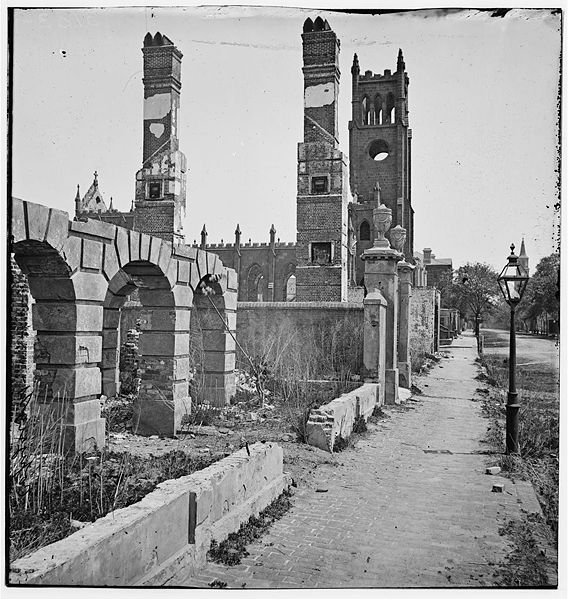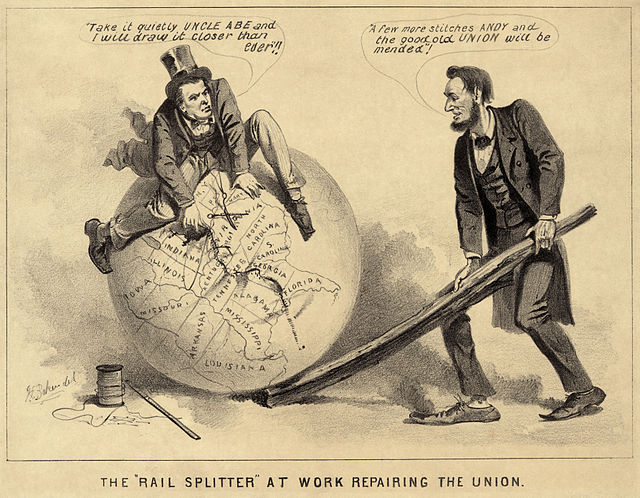In United States history, the pejorative scalawag referred to white Southerners who supported Reconstruction policies and efforts after the conclusion of the American Civil War.
A Sept. 1868 cartoon in Alabama's Independent Monitor, threatening that the Ku Klux Klan (represented by a Democratic donkey, reflecting the status of the Klan at the time as a functional auxiliary of the contemporary Southern Democratic Party) would lynch scalawags (left) and carpetbaggers (right) on March 4, 1869, predicted as the first day of Democrat Horatio Seymour's presidency (the election winner was actually Ulysses S. Grant).
The Reconstruction era was a period in United States history following the American Civil War, dominated by the legal, social, and political challenges of abolishing slavery and reintegrating the former Confederate States of America into the United States. During this period, three amendments were added to the United States Constitution to grant equal civil rights to the newly freed slaves. Despite this, former Confederate states often used poll taxes, literacy tests, and intimidation to control people of color.
The distribution of wealth per capita in 1872, illustrating the disparity between North and South in that period
The Southern economy had been ruined by the war. Charleston, South Carolina: Broad Street, 1865
A political cartoon of Andrew Johnson and Abraham Lincoln, 1865, entitled "The Rail Splitter At Work Repairing the Union". The caption reads (Johnson): "Take it quietly Uncle Abe and I will draw it closer than ever." (Lincoln): "A few more stitches Andy and the good old Union will be mended."
Monument in honor of the Grand Army of the Republic, organized after the war





